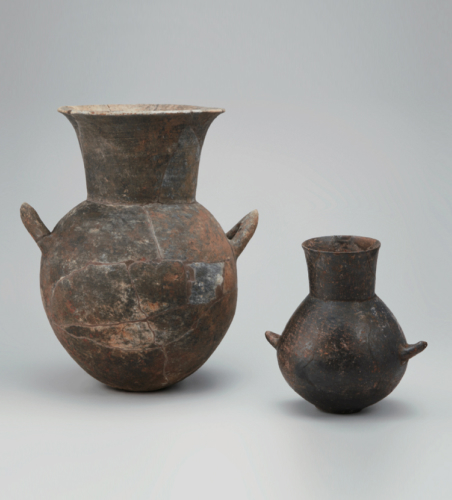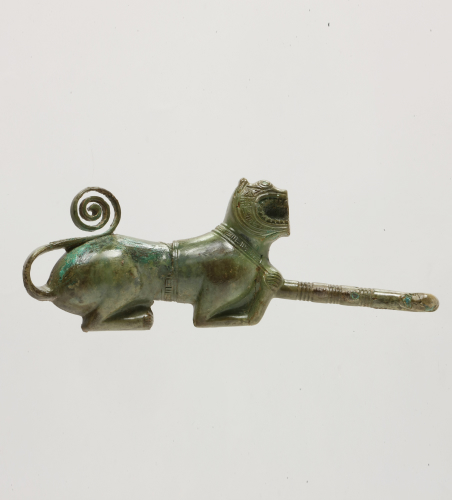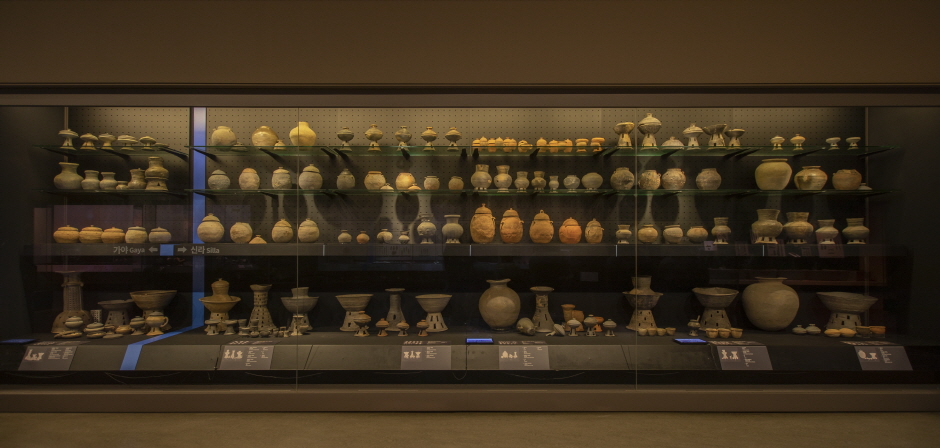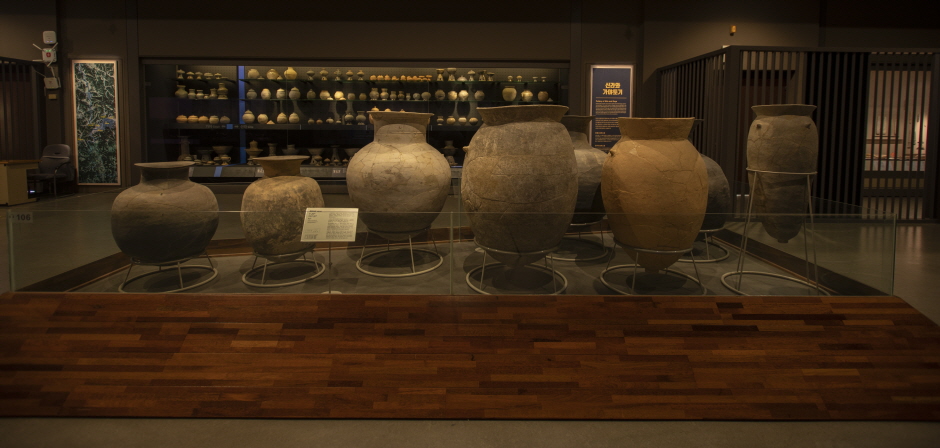Ancient Korean kingdoms
In the section dedicated to the prehistoric culture of Daegu and Gyeongsangbuk-do, visitors can examine relics dating back to the late Paleolithic era, such as a hand axe excavated from Maae-ri in Andong and microliths discovered in Wolseong-dong, Daegu. Displays also include artifacts from the Bronze Age, such as burnished red pottery (hongdo; 홍도), polished stone daggers, and bronze daggers.
The next section focuses on the period when ancient kingdoms were established in the area of Daegu and Gyeongsangbuk-do, known as the Proto-Three Kingdoms period. The displays feature various items recovered from wooden-coffin tombs, Including the gray wajil pottery (Wajil pottery has a light gray color as it was baked in a closed kiln), metalware, jewelry, and accessories.
The third section features regional artifacts dating to the Three Kingdoms period, including gilded crowns, gold earrings, and pommeled swords found inside tombs in Bisan-dong, Daegu; Imdang-dong, Gyeongsan; and Tap-ri, Uiseong-gun. Displays also include pottery and gold earrings from the Gaya Confederacy.
Ancient Korean kingdoms
Duration
This section displays a number of objects from the period when the first kingdoms were established in the area, including various examples of pottery styles that were characteristic to the region, such as mounted pottery, jars with horn-shaped handles, and urns. All of the pottery artifacts were excavated from wooden coffin tombs at primary sites of the Proto-Three Kingdoms period, located in Paldal-dong, Daegu and Sindae-ri, Gyeongsan. Other displayed items, including a tiger-shaped buckle, jade accessories, and various iron objects (including weapons and farming tools), illustrate how small tribes in the region developed into ancient kingdoms.
In the Korean peninsula, ironware was first introduced around the third century BCE, and had spread throughout the land by the second century BCE. This period is known as the Early Iron Age, as bronzewares were also still in wide use.
For about 300 years, starting around the turn of the first century CE, various kingdoms emerged in the Korean peninsula and became highly influential in Northeast Asia. During this period, many household goods were made from iron, while dishes made from gray clay were fired in long tunnel-type kilns. Historical records show that the kingdoms of the Korean peninsula engaged in international trade with their neighboring states, including China and Japan. In particular, ironware produced in the South was essential for trade. Goguryeo gradually developed into a kingdom, while the three societies of Samhan (Jinhan, Mahan, Byeonhan) were eventually replaced by Baekje, Silla, and Gaya, respectively.
Featured Items
Jar with horn-shaped handles

Tiger-Shaped Buckle




